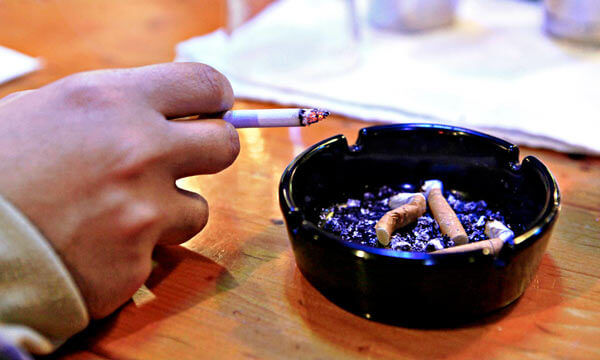A proposed smoke-free housing resolution was discussed by Queens Borough Board members during a May 9 meeting.
The purpose of this resolution is to protect other residents, mainly children, from the dangers of secondhand smoke that could otherwise vent from the units of the smokers to theirs. Landlords could recommend (but not force) tenants who smoke to do so outside for the safety of other residents.
The resolution was previously discussed during a meeting in February, but there was some belief that it would be approved during the most recent meeting. However, the board opted to have it be amended before voting on whether or not to pass it so that vape smoking and non-medical marijuana would also be included with tobacco smoke as the targets of the resolution.
Nurse practitioner Eileen Miller said that some would view the proposed resolution as a local government overreach. According to Miller, since the resolution applies to privately owned buildings, it gives landlords the right to forbid tenants from smoking inside, but they wouldn’t have to enforce it if they didn’t want to do so.
“All those around a person smoking would be affected by secondhand smoke,” Miller said. “Secondhand smoke can cause multiple health issues and children, who have smaller lungs, are at a higher risk.”
According to Lawrence Saunders of NYC Smoke-Free, there was a sharp increase in secondhand smoke exposure throughout the pandemic. This was due in large part to the fact that people were encouraged to stay at home, thus allowing the increased likelihood of people smoking inside and having that air circulate around the building.
“NYC Smoke-Free assisted property owners and managers to adopt over 147 non-smoking policies,” Saunders said. “This created protection for over 19,000 apartment units in New York City, impacting more than 50,000 residents. This resolution will help people to breathe and have a better quality of life.”
Community Board 2 Chairman Morry Galonoy emphasized how some families felt compelled to move to different apartments out of concern for their children being exposed to secondhand smoke by neighbors. He believes this resolution will help families avoid being exposed to such a big health risk.
While most in attendance had a favorable view of the anti-smoking resolution, there were still critics.
Community Board 7 Chairman Gene Kelty still had concerns about the resolution limiting an individual’s rights. Kelty felt that smoking was a right and forcing an individual to go outside to do so would be an attack on their freedom. He proposed the development of smoking rooms in buildings, that would filter air outside so that it wouldn’t affect the other residents in the building.
Despite much support for the resolution, most of the community board members in favor of it want it to include more than just tobacco smoking. Vape smoking and non-medical marijuana will be added to the resolution before it is voted on during the next board meeting in June.


































